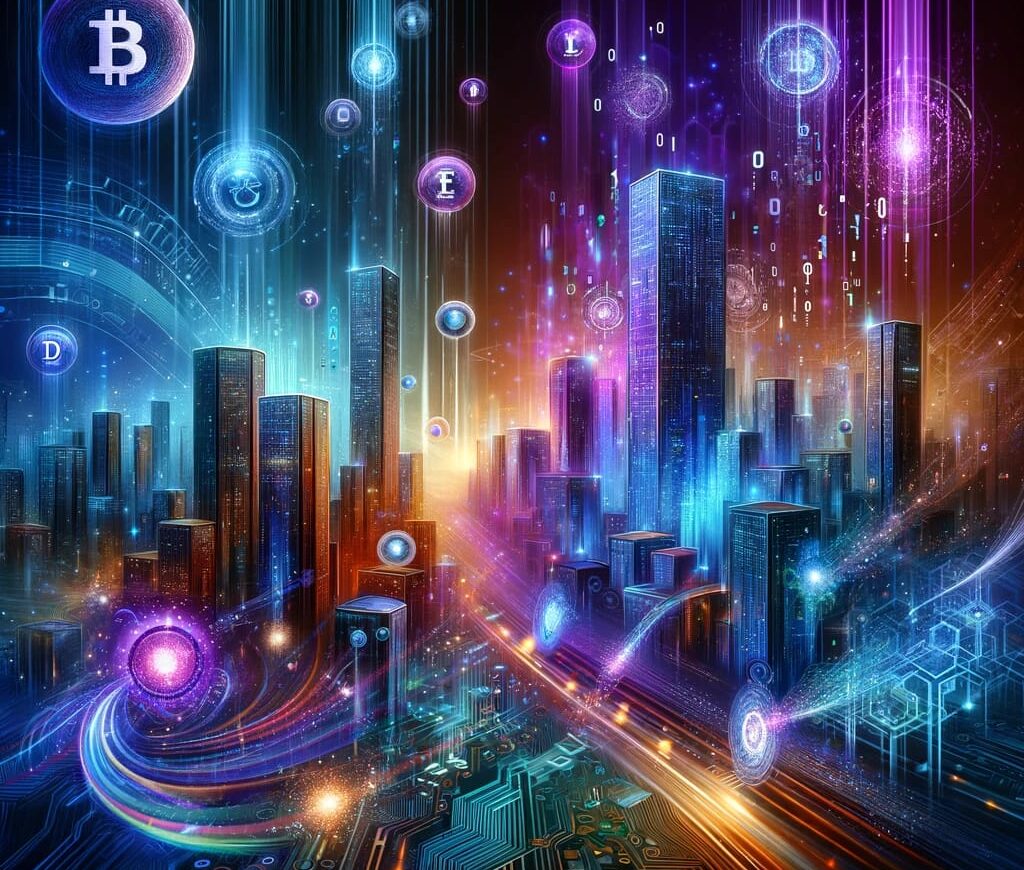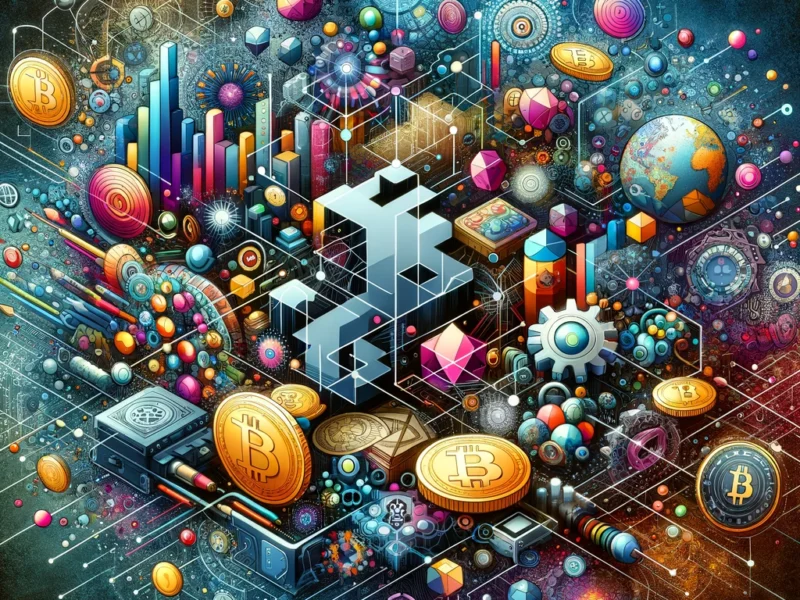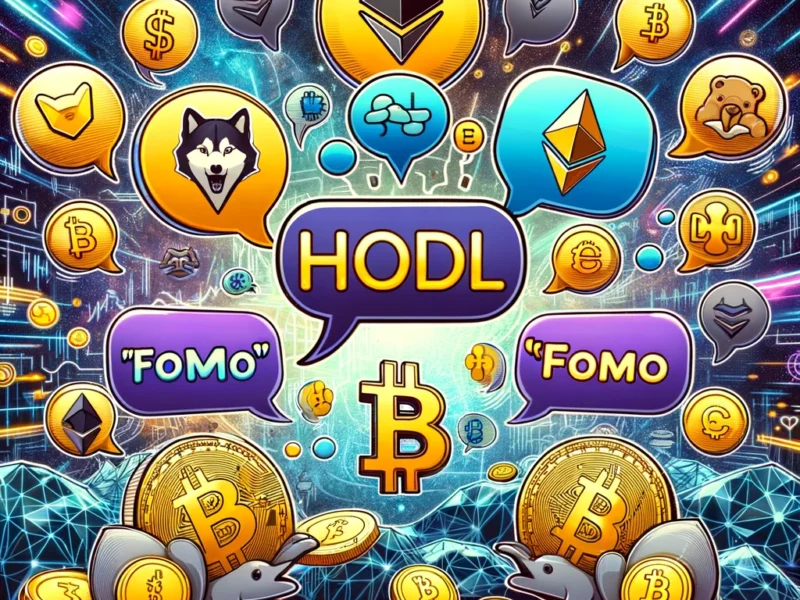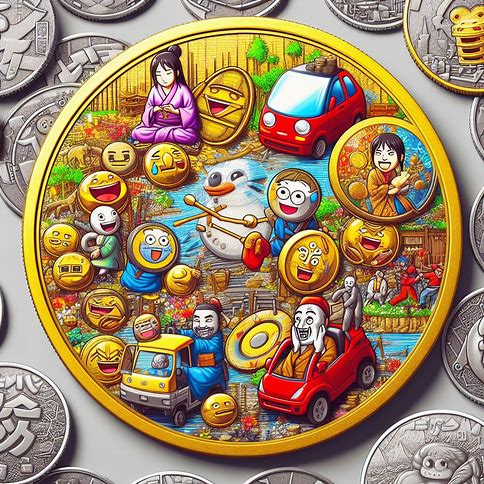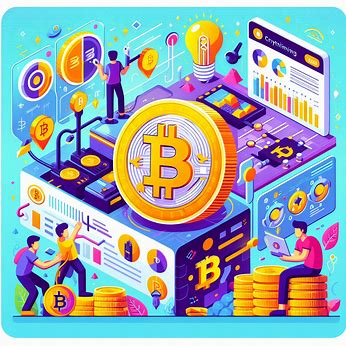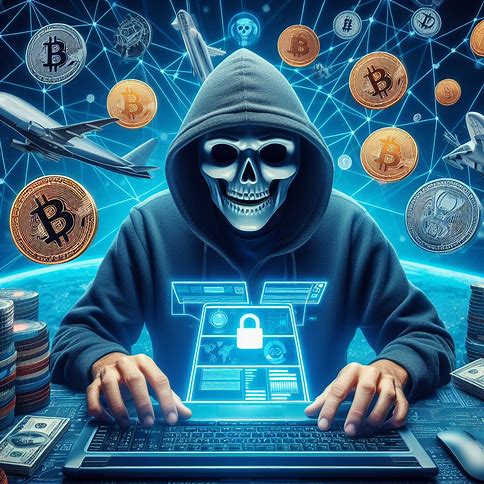Entering the NFT market is like learning a new language and can be both complex and amazing at the same time. But don’t worry; we’ve got you covered. Whether you’re a digital artist looking to sell your artwork as an NFT, a crypto enthusiast, or just NFT-curious, here are the most important NFT terms you need to know.
1. NFT (Non-Fungible Token)
Starting with the basics, NFT stands for Non-Fungible Token. Think of it as a unique digital certificate of ownership for a specific item or piece of content, like digital art, music, or even tweets. Unlike cryptocurrencies, each NFT is one-of-a-kind and can’t be exchanged on a like-for-like basis. This uniqueness is what makes them so appealing and valuable to millions of investors.
2. Blockchain
Blockchain is the backbone of NFTs. It’s a digital ledger that records all transactions across a network of computers. This technology ensures the authenticity and security of each NFT, making it nearly impossible to forge or tamper with. It’s like a digital notary that keeps track of who owns what.
3. Ethereum
Ethereum is the most popular blockchain used for creating and trading NFTs. It’s not just a cryptocurrency like Bitcoin; it’s a platform that supports NFTs through its robust smart contract capabilities. Ethereum is like the Silicon Valley of NFTs, where they can be created, bought, and sold securely.
4. Smart Contracts
A smart contract is a self-executing contract with the terms of the agreement directly written into code. In the NFT space, these contracts automatically execute actions like transferring ownership and managing royalties. They make sure everything runs smoothly and fairly in the NFT marketplace.
5. Minting
Minting is the process of creating a new NFT. When you mint an NFT, you’re essentially turning a digital file into a digital asset on the blockchain. It’s like certifying a digital creation as a unique piece of art that can be bought, sold, or collected.
6. Marketplaces
NFT marketplaces are where the magic happens. They’re online platforms where you can buy, sell, or create NFTs. Each marketplace has its own vibe, with some specializing in art, others in music, and even some for virtual real estate. Popular examples include OpenSea, Rarible, and Foundation.
7. Gas Fees
Gas fees are transaction fees on the Ethereum network (or other blockchains). They’re like postage stamps for the digital world—the fee you pay to miners to process and validate your transactions, including NFT transactions. These fees can fluctuate based on network demand.
8. Metadata
Metadata in NFTs is like the identity card of your digital asset. It contains all the essential information about the NFT, such as its creator, history, and characteristics. It’s what makes your NFT more than just a pretty picture—it’s a story and a certificate of authenticity all rolled into one.
9. Decentralization
Decentralization is a key concept in blockchain and NFTs. It means that instead of being controlled by a single entity (like a bank or a government), the system is spread across a network of computers. This decentralization is what makes NFTs secure and democratizes the art world by giving more power to creators and collectors.
Related: 63 Crypto, Web3 and Blockchain Terms You Need to Know
10. Rarity
With NFTs, rarity refers to the uniqueness and scarcity of an NFT. It’s a big deal because the rarer an NFT is, the more valuable it can be. Rarity can depend on factors like limited editions, unique traits, or even the fame of the artist. It’s the digital equivalent of having a one-of-a-kind masterpiece in the art world.
11. Cryptocurrency
Cryptocurrency is the currency of the NFT marketplace. These digital or virtual currencies, like Bitcoin, BNB and Ethereum, use cryptography for secure transactions. They’re integral to buying and selling NFTs and are the financial backbone of the digital art market.
12. Fractional Ownership
Fractional ownership means owning a part of an NFT. High-value NFTs can be divided into smaller, more affordable pieces, allowing more people to invest in them. It’s like owning a piece of a rare painting rather than needing to buy the whole artwork.
13. Wallet
In the NFT industry, a wallet is a digital wallet where you store your cryptocurrencies and NFTs. Think of it as a secure digital bank account that holds your digital assets. You’ll need one to get started buying, selling, or creating NFTs.
14. Liquidity
In NFT terms, liquidity refers to how easily an NFT can be bought or sold. If an NFT is highly liquid, it means there’s a good chance you can sell it quickly. Low liquidity means it might take a while to find a buyer. It’s one of the most important NFT terms you need to know if you’re looking to invest in NFTs.
15. Token Standard
Token standards are like the rulebooks for NFTs on the blockchain. The most common standard for NFTs on Ethereum is ERC-721, which ensures that each token is unique and non-interchangeable. There’s also ERC-1155, which allows for the creation of both fungible (like coins) and non-fungible (like unique artwork) tokens.
16. Proof of Ownership
Proof of ownership is a key aspect of NFTs. It’s blockchain-verified evidence that you own a specific digital asset. This proof is tamper-proof and transparent, making it easy to verify who owns what without any doubt. It’s like having a notarized certificate for your digital collectible.
17. Royalties
In the NFT space, royalties mean the percentage of sales that artists and creators receive whenever their NFT is resold. This means ongoing earnings from their work, a concept that’s transforming how creators benefit from their art.
18. Interoperability
Interoperability is about how well different blockchain systems can work together so that an NFT bought on one platform can be used or accessed across other platforms. This interoperability enables the widespread adoption and practical use of NFTs.
19. Fungibility
Fungibility is the property of an asset whose individual units are interchangeable and indistinguishable from each other, like traditional currencies. In contrast, NFTs are non-fungible, meaning each token is unique and not interchangeable on a like-for-like basis.
20. Floor Sweep
Floor sweep refers to buying a large number of NFTs at the floor price (the lowest price) in a particular collection. This tactic is often used by investors or collectors looking to acquire a significant portion of a collection, potentially to resell them at a higher price later.
21. DAO (Decentralized Autonomous Organization)
A DAO is a type of organization represented by rules encoded as a computer program that is transparent and controlled by the organization members and not influenced by a central government. DAOs are a fundamental part of the NFT ecosystem and are often used to make decisions in a decentralized manner.
22. Cryptographic Hash
A cryptographic hash is a unique string of characters generated by a hash function. In the NFT industry, it acts like a digital fingerprint for data, ensuring the integrity and authenticity of the NFT. It’s a complex concept, but in simple terms, it’s a signature that verifies that an NFT is the real deal.
23. Cold Wallet/Hot Wallet
For storing digital assets, there are two main types of wallets: cold and hot. A cold wallet is offline storage, like a USB drive, offering high security for your NFTs and cryptocurrencies. A hot wallet, on the other hand, is connected to the internet, making it more accessible but slightly less secure due to its online nature.
24. IPFS (InterPlanetary File System)
IPFS is a decentralized way to store and share files on a distributed file system. In NFTs, IPFS is used to ensure that digital assets remain accessible and unchangeable over time. It’s like a futuristic library that ensures digital art remains safe and sound for ages.
25. Whitelist
In NFT launches, being on the whitelist means you get early or exclusive access to new NFT drops. It’s like being on the VIP list for the hottest event in town, giving you a chance to buy into exclusive NFT collections before they open to the general public.
26. Gas Wars
Gas wars occur when there’s high demand for NFTs, leading to a surge in gas fees as users try to outbid each other to get their transactions processed faster. It’s a bit like a bidding war in an auction, but for decentralized digital transactions.
27. Flipping
Flipping refers to the practice of buying an NFT at a low price and selling it at a higher price for a profit. It’s similar to flipping real estate or stocks.
28. Floor price
The floor price is the lowest price at which an NFT can be bought in a collection. It’s a good indicator of the collection’s entry level. It’s like the “starting price” in an auction, but for NFTs.
29. Burn
In NFT terms, to “burn” means to permanently remove an NFT from circulation, often to reduce supply and increase rarity. It’s like taking a painting off the market forever, making the remaining pieces more valuable.
30. Shilling
Shilling in NFT context refers to the act of aggressively promoting or hyping up a particular NFT or NFT project, often to increase interest and drive up prices. While enthusiasm is great, be aware that not all shilling is genuine, and some may be misleading.
31. Airdrop
An airdrop in the NFT space is like a surprise gift. It involves sending free NFTs to the wallets of users, often as a promotion or reward. It’s a strategy used to create buzz or reward loyal members of a community.
32. Drop
A “drop” in NFT lingo refers to the release or launch of a new NFT or NFT collection. Much like a product launch, drops are often highly anticipated events in the community, with the potential for quick sell-outs and high demand.
33. Utility
In NFTs, utility refers to the additional benefits or uses that an NFT provides beyond just being collectible. This could include access to events, additional content, earning cryptocurrencies, or even physical items. It’s like having a membership card that offers more than just ownership; it’s a key to exclusive experiences.
34. Genesis Piece
A Genesis Piece in the NFT industry refers to the first-ever created piece in an artist’s collection or project. It holds special significance and is often highly valued for being the origin point of an artist’s work in the digital space.
35. Liquidity Pool
A liquidity pool is a collection of funds locked in a smart contract. In the context of NFTs and cryptocurrencies, these pools are used to facilitate trading by providing liquidity, making it easier to buy or sell large amounts of assets without significant price changes.
36. Metaverse
The metaverse is a collective virtual shared space created by the convergence of virtually enhanced physical reality, augmented reality (AR), virtual reality (VR), and the internet. In the NFT space, it’s where digital assets can be used and displayed in a virtual world, adding a whole new dimension to their value and utility.
37. PFP (Profile Picture) NFTs
PFP NFTs are non-fungible tokens used as profile pictures on social media platforms like Twitter. They’re not just a digital avatar; owning a PFP NFT from a popular collection can signify status and membership in an online community.
38. Scalability
Scalability refers to a blockchain’s ability to handle a growing amount of work or transactions. In the NFT space, this is crucial for maintaining fast transaction speeds and reasonable gas fees as the number of NFT transactions increases.
39. Staking
Staking in the NFT context involves locking up your digital assets to receive rewards or earn interest. It’s a way to make your NFTs work for you, earning additional income (mostly in cryptocurrencies) while they’re not being sold.
40. Cross-Chain
Cross-chain refers to the ability to transfer data, assets, or tokens between different blockchain networks. In the NFT space, this is significant because it allows for greater flexibility, interoperability and accessibility, enabling NFTs to move beyond the boundaries of their original blockchain.
41. Immutable
In blockchain and NFT terms, “immutable” means that once something is written to the blockchain, it cannot be changed or deleted. This immutability affirms the trustworthiness of NFTs, ensuring that the history and ownership of each token remain unaltered over time.
42. Beeple
Beeple is the pseudonym of Mike Winkelmann, a renowned digital artist who made headlines when his NFT artwork sold for a staggering $69 million at Christie’s. This sale marked an important moment in the history of NFTs, showcasing the immense potential value of digital art.
43. OpenSea
OpenSea is a leading decentralized marketplace for buying, selling, and discovering NFTs. It’s a platform where artists and collectors meet, offering a wide range of digital assets, from art and music to domain names and virtual worlds.
Frequently Asked Questions
1. How do blockchains support NFTs?
Blockchains act as digital ledgers that record all transactions across a network, ensuring the authenticity, security and ownership of NFTs, making them nearly impossible to forge.
2. Why is Ethereum important in the NFT space?
Ethereum is a leading blockchain platform for NFTs, offering smart contract capabilities that facilitate the creation, buying and selling of NFTs securely.
3. What is the significance of rarity in NFTs?
Rarity in NFTs refers to the uniqueness and scarcity of a digital asset, which can significantly influence its value, similar to one-of-a-kind masterpieces in the art world.
4. What is cryptocurrency used for in NFT marketplaces?
Cryptocurrencies are the digital currencies used for transactions in the NFT marketplace and are essential for buying and selling NFTs.
5. What is fractional ownership in NFTs?
Fractional ownership allows multiple individuals to own a portion of an NFT, making high-value digital assets more accessible to a broader audience.
